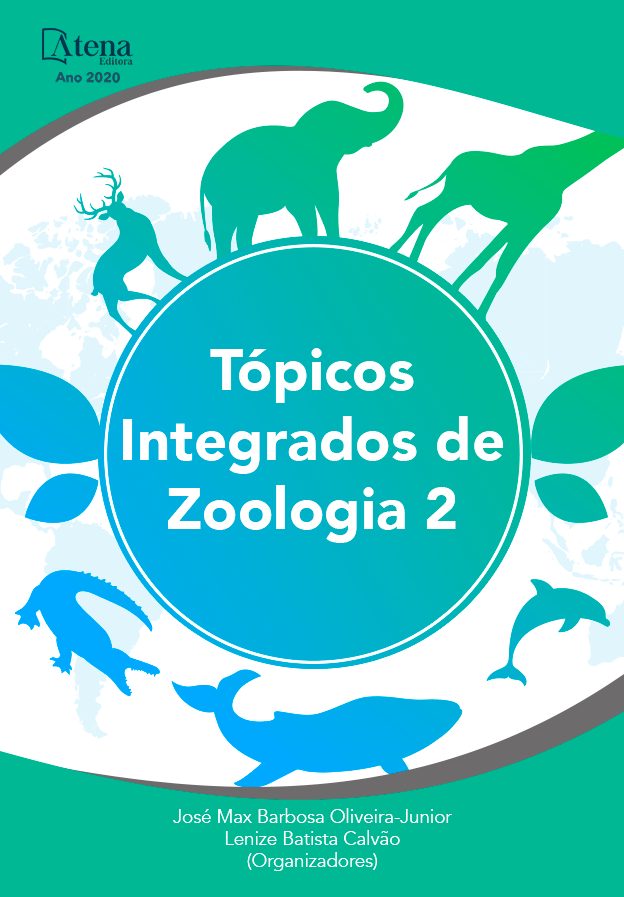
EFEITO DO HIDROPERÍODO SOBRE OS MACROBENTOS UTILIZADOS NA ANÁLISE DA QUALIDADE DA ÁGUA NO TRECHO MÉDIO DO RIO PITIMBU/RN
Os impactos ocasionados pelo desmatamento e a contaminação dos corpos hídricos têm resultado a degradação da qualidade da água, impossibilitando o uso desse recurso para atender as necessidades básicas do ser humano, ocasionando alterações na estrutura faunística. O biomonitoramento dos ecossistemas através do uso dos macrobentos resulta numa avaliação segura e confiável da qualidade da água. A região Nordeste apresenta pouca informação a respeito desta temática, daí a importância de trabalhos como este. Portanto, o estudo objetivou avaliar a presença de macrobentos como bioindicadores da qualidade da água no trecho médio do rio Pitimbu, município de Parnamirim, estado do Rio Grande do Norte ao longo das estações chuvosa e seca utilizando três índices bióticos. O material foi coletado nas margens esquerda, direita e centro com auxílio do rapiché e armazenados em frascos de 0,5L contendo álcool 80%, posteriormente, triado e identificado no LABENT/UFRN. Para análise dos macrobentos foram empregados três índices bióticos, Chandler*, BMWP’* e Hilsenhoff. A composição dessas comunidades, e consequentemente, a qualidade hídrica pode variar temporariamente entre anos e também sazonalmente dentro de um único ano hidrológico. Os resultados mostraram-se em desacordo com a hipótese inicial de que esta região apresentaria qualidade de água teoricamente superior por estar em local mais preservado e, portanto, com características menos alteradas. No total foram coletados 332 espécimes, distribuídos em 22 famílias. De acordo com o hidroperíodo do rio, houve uma maior diversidade das famílias no período chuvoso, contrastando com o período seco. As larvas de insetos Diptera (Chironomidae), bem como um grande número de Mesogastropoda (Thiaridae) apresentaram nas duas estações um aumento considerável em relação aos outros grupos. Tal fato pode estar relacionado com a capacidade de tolerar ambientes degradados. Finalmente, os ciclos dos hidroperíodos de cheia, geralmente, possuem comunidades faunísticas mais abundantes.
EFEITO DO HIDROPERÍODO SOBRE OS MACROBENTOS UTILIZADOS NA ANÁLISE DA QUALIDADE DA ÁGUA NO TRECHO MÉDIO DO RIO PITIMBU/RN
-
DOI: 10.22533/at.ed.6242013116
-
Palavras-chave: Macroinvertebrados, Biomonitoramento, Índices Bióticos, Chironomidae, Bacia Hidrográfica do Rio Pitimbu
-
Keywords: Macroinvertebrates, Biomonitoring, Biotic Indices, Chironomidae, Pitimbu’s River Basin
-
Abstract:
The impacts caused by deforestation and contamination of water bodies have resulted in the degradation of water quality, making it impossible to use this resource to meet the basic needs of human beings, causing changes in the faunistic structure. The biomonitoring of ecosystems through the use of macrobenthos results in a safe and reliable assessment of water quality. The Northeast region presents little information on this subject, hence the importance of works like this. Therefore, the study aimed to evaluate the presence of macrobenthos as bioindicators of water quality in the middle stretch of the Pitimbu river, municipality of Parnamirim, state of Rio Grande do Norte along the rainy and dry seasons using three biotic indices. The material was collected on the left, right and center margins with the aid of rapiché and stored in 0.5L flasks containing 80% alcohol, later sorted and identified at LABENT/UFRN. Three biotic indexes, Chandler*, BMWP'* and Hilsenhoff, were used to analyze the macrobenthos. The composition of these communities, and consequently, the water quality may vary temporarily between years and also seasonally within a single hydrological year. The results were at odds with the initial hypothesis that this region would present theoretically superior water quality because it is in a more preserved location and, therefore, with less altered characteristics. In total 332 specimens were collected, distributed in 22 families. According to the river's hydroperiod, there was a greater diversity of families in the rainy period, contrasting with the dry period. The larvae of Diptera insects (Chironomidae), as well as a large number of Mesogastropoda (Thiaridae) showed in both seasons a considerable increase compared to the other groups. This may be related to the ability to tolerate degraded environments. Finally, the cycles of the flood hydroperíodes generally have more abundant faunistic communities.
-
Número de páginas: 17
- Víctor Henrique Silva Cavalcanti
- Herbet Tadeu de Almeida Andrade
- João Vinícius Cruz Barbosa
- Jaqueline Cristina Oliveira dos Santos


